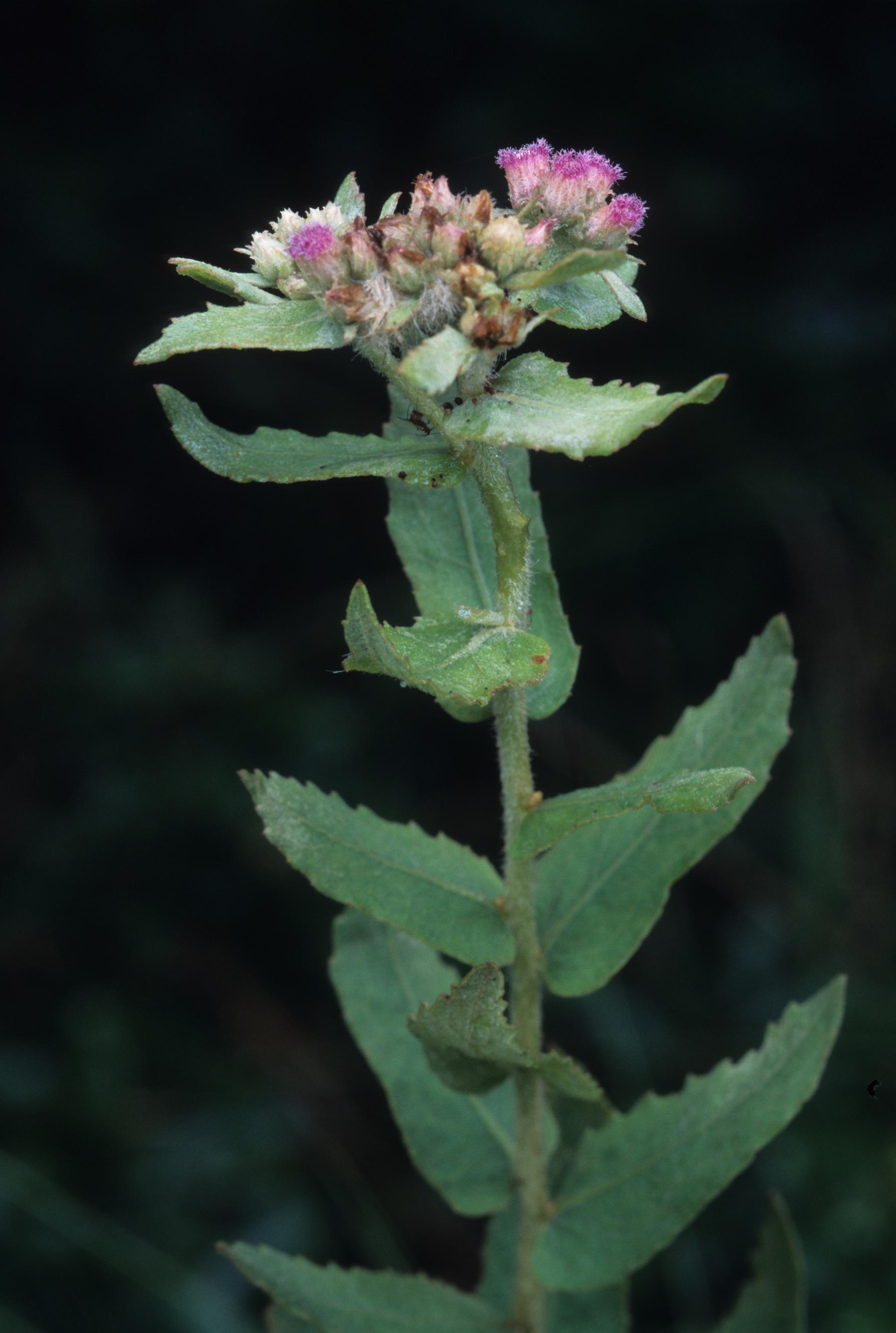Difference between revisions of "Pluchea rosea"
Laurenloria (talk | contribs) |
Laurenloria (talk | contribs) |
||
| Line 36: | Line 36: | ||
===Phenology=== <!--Timing off flowering, fruiting, seed dispersal, and environmental triggers. Cite PanFlora website if appropriate: http://www.gilnelson.com/PanFlora/ --> | ===Phenology=== <!--Timing off flowering, fruiting, seed dispersal, and environmental triggers. Cite PanFlora website if appropriate: http://www.gilnelson.com/PanFlora/ --> | ||
| − | Flowers May through September.<ref name="jstor" | + | Flowers May through September.<ref name="jstor">[[http://plants.jstor.org/compilation/pluchea.rosea]]JSTOR. Accessed: February 20, 2016</ref> |
<!--===Seed dispersal===--> | <!--===Seed dispersal===--> | ||
<!--===Seed bank and germination===--> | <!--===Seed bank and germination===--> | ||
Revision as of 17:25, 12 December 2016
| Pluchea rosea | |
|---|---|

| |
| Photo taken by Gil Nelson | |
| Scientific classification | |
| Kingdom: | Plantae |
| Division: | Magnoliophyta - Flowering plants |
| Class: | Magnoliopsida – Dicotyledons |
| Order: | Asterales |
| Family: | Asteraceae |
| Genus: | Pluchea |
| Species: | P. rosea |
| Binomial name | |
| Pluchea rosea Godfrey | |

| |
| Natural range of Pluchea rosea from USDA NRCS Plants Database. | |
Common name: Rosy camphorweed
Contents
Taxonomic notes
Synonym: Pluchea baccharis (Mill.) Pruski; USDA NRCS Plants Database
Description
"Perennial or annual, erect herbs, stems erect, densely short pubescent, terete to obscurely angled, strict to freely branched. Leaves alternate, serrate, the teeth-callous-thickened, petiolate to sessile. Heads corymbose. Involucres hemispheric to campanulate, many flowered; bracts imbricate, in several series. Flowers all discoid, perfect, very small. Nutlets small, cylindric, 5-ribbed; pappus bristles whitish, capillary, minutely, antrosely barbed, 3-4 mm long." [1]
"Pubescent perennial, 4-11 dm tall, usually strict. Leaves oblong to elliptic-oblong, 3-9 cm long, 1.3-5 cm wide, obtuse to acute, auriculate-clasping sessile. Heads sessile or essentially so in glomerules in compact corymbs, the lateral branches usually overtopping the central. Involucres 3-6 mm long; bracts acute. Corollas pink. Nutlets black, 0.5-1 mm long, densely pubescent." [1]
Distribution
P. rosea is distributed in the northern and central Bahamas, North America and the Caribbean.[2]
Ecology
Habitat
Habitats of P. rosea include swamp grasslands, river banks, edges of limestone sinks, and disturbed coastal prairies. [3] [4] Associated species include Sapium sebiferum, Panicum virgatum, Symphyotrichum, Ludwigia linearis, Helianthus angustifolius, Rudbeckia nitida var. texana, Paspalum floridanum, and Rhynchospora. [4]
Phenology
Flowers May through September.[5]
Pollination
Mark Deyrup at Archbold Biological Station observed these Hymenoptera species on Pluchea rosea:
Halictidae: Dieunomia heteropoda
Leucospididae: Leucospis robertsoni, L. slossonae
Megachilidae: Megachile albitarsis, M. brevis pseudobrevis
Pompilidae: Anoplius marginalis
Sphecidae: Bicyrtes capnoptera, B. insidiatrix, B. quadrifasciata, Cerceris bicornuta, C. blakei, C. fumipennis, C. rufopicta, Ectemnius rufipes ais, Isodontia exornata, Microbembex monodonta, Philanthus ventilabris, Prionyx thomae, Sphex ichneumoneus, Tachysphex similis, Tachytes pepticus, T. validus
Vespidae: Eumenes smithii, Euodynerus castigatus rubrivestris, E. hidalgo, Pachodynerus erynnis, Parancistrocerus fulvipes rufovestris, P. perennis anacardivora, P. salcularis rufulus, Polistes bellicosus, P. fuscatus, Stenodynerus fundatiformis, Zethus slossonae, Z. spinipes
Conservation and management
Cultivation and restoration
Photo Gallery
References and notes
Deyrup, M.A. and N.D. 2015. Database of observations of Hymenoptera visitations to flowers of plants on Archbold Biological Station, Florida, USA.
(2008). "Essential Oil, from the Stems, Leaves and Flowers of Pluchea rosea Godfrey and Pluchea purpurascens (Sw.) DC." Journal of Essential Oil Research 20(6): 497-501.
- ↑ 1.0 1.1 Radford, Albert E., Harry E. Ahles, and C. Ritchie Bell. Manual of the Vascular Flora of the Carolinas. 1964, 1968. The University of North Carolina Press. 1062. Print.
- ↑ [[1]]Leon Levy Native Plant Preserve. Accessed: February 20, 2016
- ↑ Delta State University Herbarium. Accessed: February 2016.[2]. Collectors: T. Bradley, John Stevenson. States: North Carolina: Brunswick.
- ↑ 4.0 4.1 University of Texas Herbarium. Accessed: February 2016. Collectors: B.L. Turner. States: Texas: Harris, Newton.
- ↑ [[3]]JSTOR. Accessed: February 20, 2016